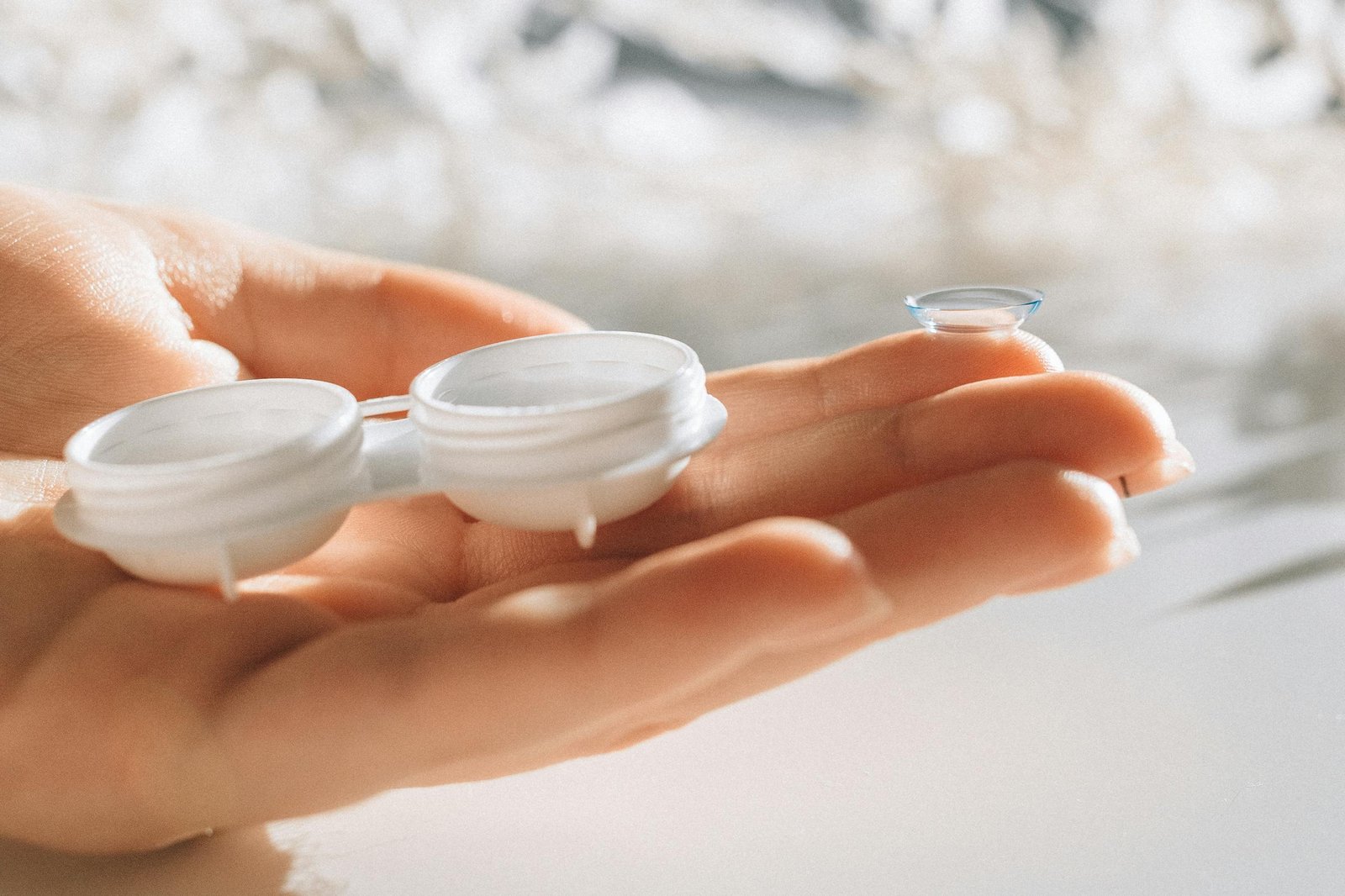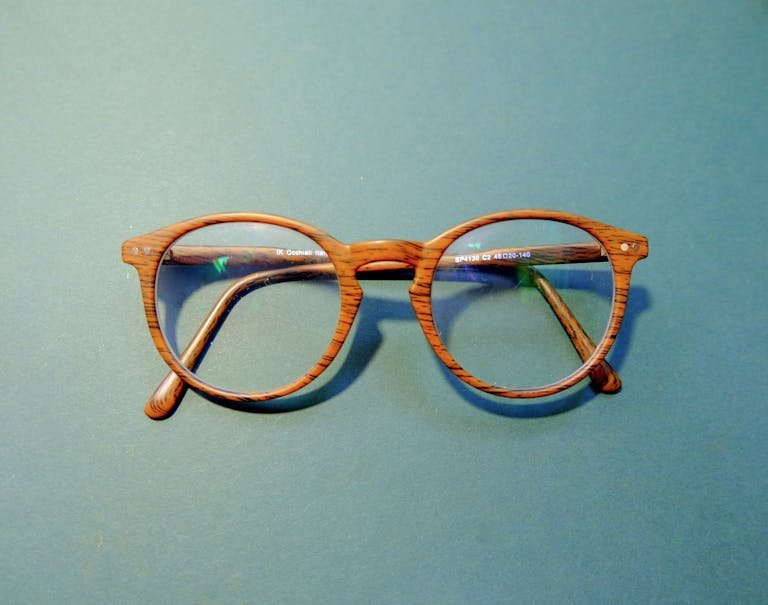Contact Lens Inside Out? 5 Easy Ways to Check
Afraid your contact lens may be inside out? You do not need to be alone. It happens to be one of the most frequent problems among contact wearers, especially when your eye begins to itch, your eyes become hazy, or when that lens does not fit quite right.
Hi, my name is Laura, and I have had this problem too many times to count. I wear contact lenses every day, so I know all about how bad it can go wrong as well. I have tried personally every popular trick, the side view of the taco test
I will reveal to you how to tell whether your contact lens is inside out using simple techniques that are easy to follow and accurate. I will also touch on what to do in case you put it the wrong side up, and how to adjust it in case it goes wrong, to save your eyes, be comfortable, as well as be able to see without doubts.
Methods for Determining if Your Contact Lenses Are Inside Out
1. Side View
- Put the contact lens on the index finger point that is clean and dry.
- Place your finger up at eye level in such a manner to be able to see the side of the lens.
- Determine whether the lens is curved. And when stooping down to it, should appear about a smooth bowl, the edges curving up a little, then hath it rightly been directed.
- When the edges are outward bulging in lip shape, or resemble saucers, then it is inside out.
- This is an easy, quick, and convenient technique, especially when you are in a rush.
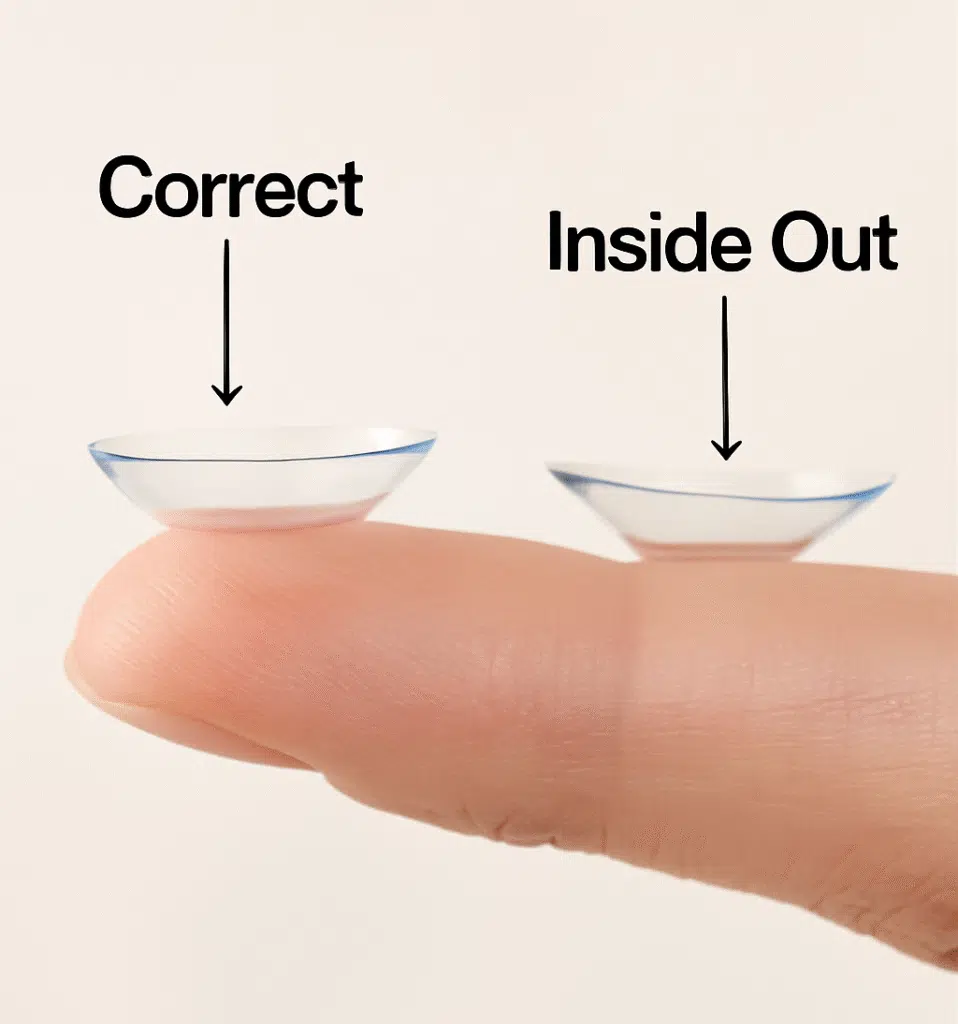
2. Taco Test
- The lens should also be held carefully between the thumb and the index finger, holding it in the middle.
- Just softly squeeze the lens gently towards you as you would a soft taco shell.
- When folded toward each other and creating a neat-looking taco shape, the lens is properly oriented.
- In case the edges turn out or remain straight, there is an indication that the lens is inside out, and thus it must be reversed.
- This is a technique that I have found extremely useful when it comes to the soft lenses that cannot be made out merely by their shape.
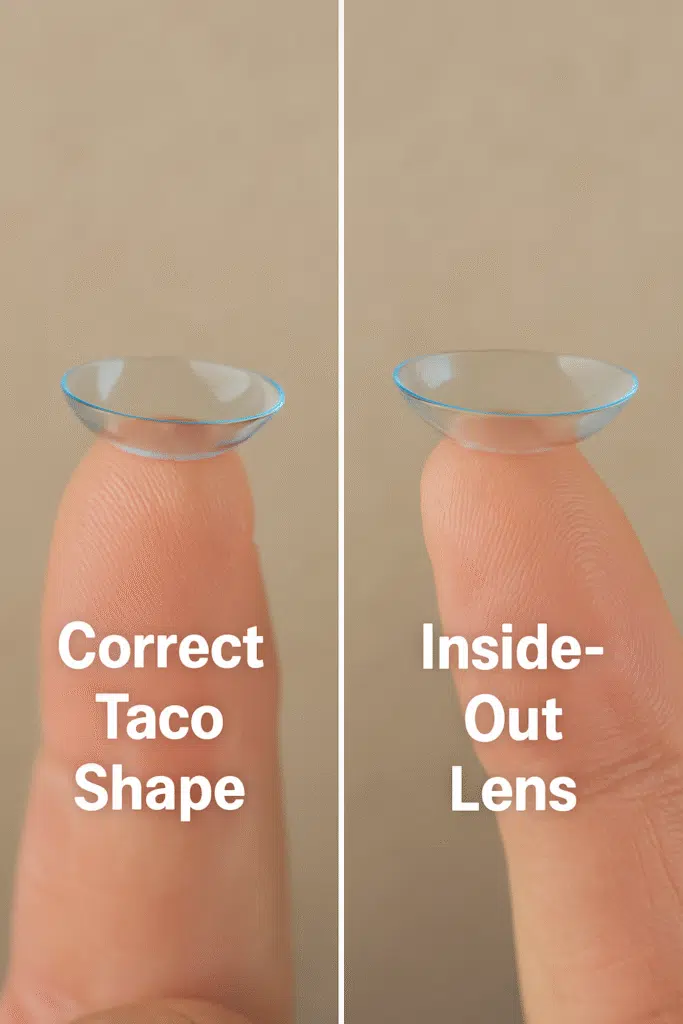
3. 1-2-3 Number
- Look to see whether the numbers or letters engraved on your lens brand start with 1-2-3 somewhere close to the edge.
- Hold the lens between the tips of your fingers, facing upwards in front of your bright light or a flashlight.
- Rotate the lens a little bit until you get the numbers.
- When the correct-looking numbers (1-2-3) are facing you, the lens is right-side out.
- Backward or reversed numbers would spell that the lens is inside out and should be flipped.
- It is foolproof, but not every lens will have these marks.
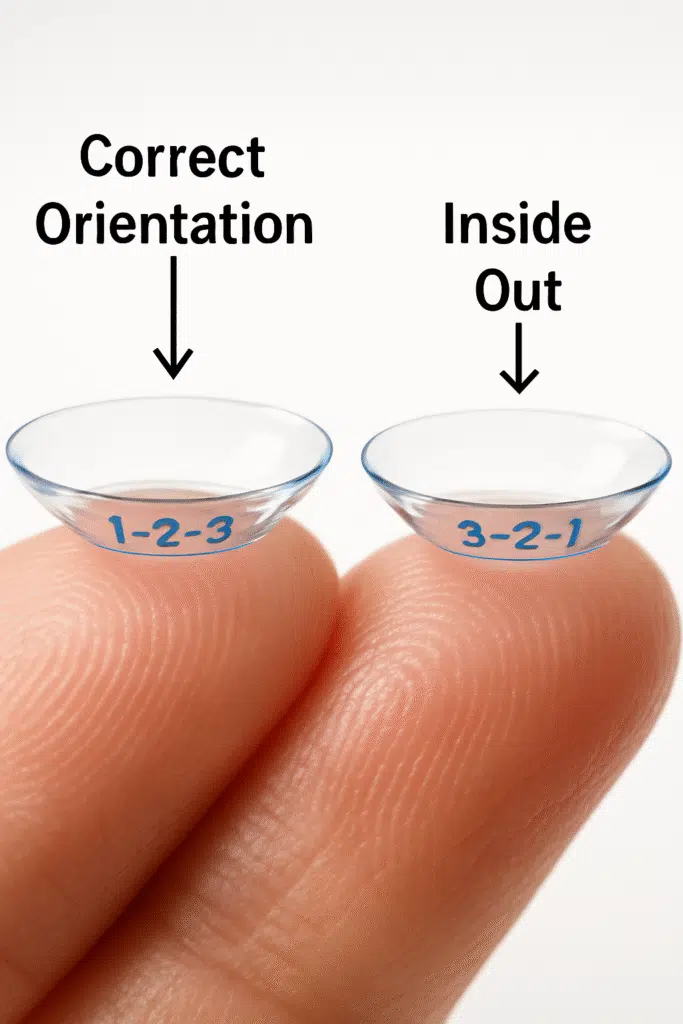
Read Also: What Is a Photochromic Lens? Benefits, Types & How It Works
4. Tinted Edge Test
- Put the lens near a white backdrop or bring a lot of light.
- Examine the perimeter of the lens to see whether there should be a light blue or green discoloration (your lenses may be colored in that respect).
- When a lens is properly oriented, one will see the even tint, round-edged tint.
- An inside-out lens can be wavy, and its tint can be faint or inconsistent on the rim.
- It is a fantastic trick, especially when you have one brand that provides such new improvisations of visibility tinting.
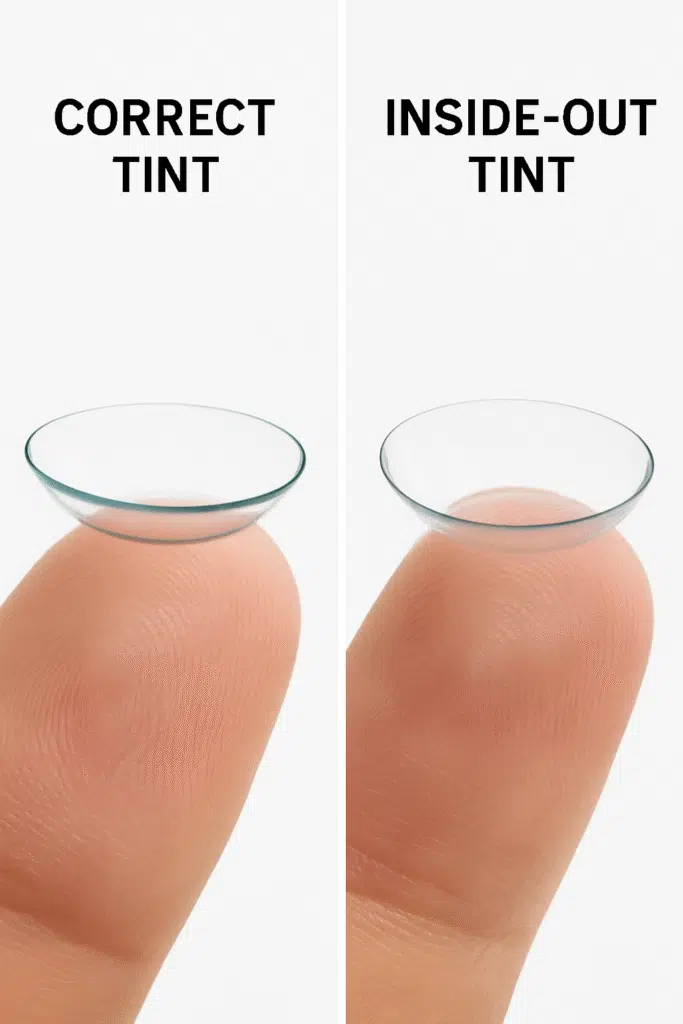
5. Easy Flip Test
- Put the lens on the end of your fingertip and, carefully, turn over and then turn back once more
- With a lens in the right position, it will feel just a little firmer and more securely maintain its bowl shape.
- When it feels loose, tipsy, or flips too easily, chances are that it is inside out.
- It is not an official test, but this one is really helpful with some practice.
- It gives you a sense of the right way of the lens, in case of ambiguity, following other tests.
- All you have to do is make sure that your fingers are dry and clean to avoid sticking or tearing the lens, since it is made of glass.
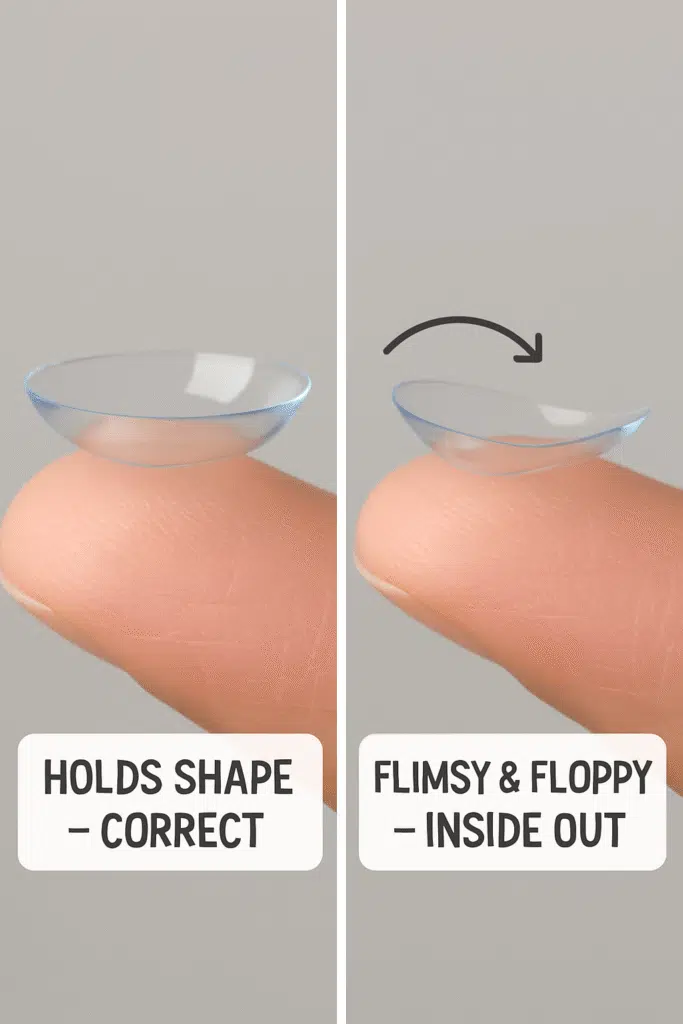
6. Orientation in Daily Lens Packaging
- Once you open a blister pack of a new contact lens, examine the manner in which the lens lands in the solution.
- The majority of the daily disposable lenses are inserted in the proper position by the manufacturer.
- A lens that appears to be a perfect bowl or dome shape is probably already accurate and ready to use.
- It appears flat, or angled, or even with lifted edges, then it could have flipped during packaging or removal.
- I never move it without looking to see the shape, or I overflip it.
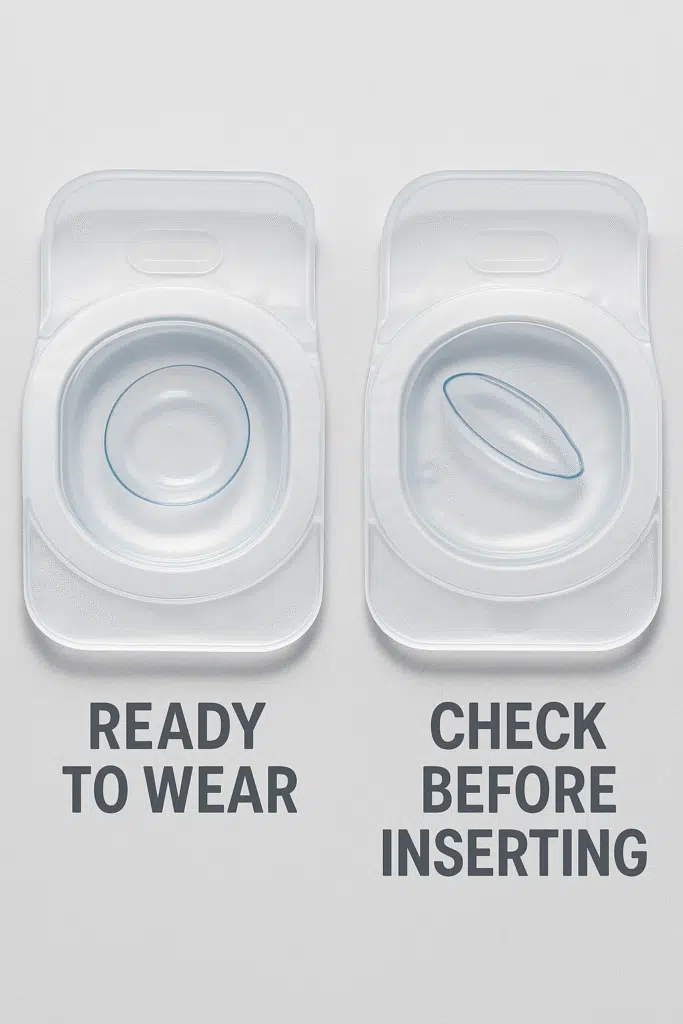
Is It Dangerous to Wear a Contact Lens Inside Out?
Wore them inside out myself (yep, more than once), and every time, my vision became blurred and constantly irritable, and that scratchy feeling of never-ending irritation that just would not go away. Although wearing your lens incorrectly won’t instantly give you an infection or permanently damage your lens, wearing it the wrong way can cause red, dry eyes and lens drift out of center during the day.
It is not too dangerous to hurt you, but certainly take the time to see through your lens before putting it in your eyes. To help you put your lenses on with the first blink and avoid the discomfort and eye damage, I will demonstrate precisely how to tell whether your lens is on inside out in this guide.
Can You Recenter a Contact Lens?
Certainly, in case your contact lens feels loose, dirty, or no longer looks centered or clear, do not panic. You are not alone, and the answer is yes, you can properly and carefully recenter a soft contact lens. This has occurred to me so many times that I can not count the number of times it has happened, particularly after I am blinking too fast or after I have rubbed my eyes.
This is how you can quickly remedy it without getting all worked up:
- Of course, first you wash your hands and dry them.
- Check in the mirror and find where the lens has moved, whether behind your eyelid or to one side.
- Flick your eyelid one way with your fingertip, pretty much the way the lens has to go, either towards the center.
- Alternatively, you can look in a different direction from where the lens is sitting, and then slowly blink, which will get the lens to slide back into position naturally.
- Unless these alleviate or your eye continues to feel uncomfortable, take the lens out, fill it with lens solution, verify that it is not inside out, and put it back in.
FAQs
1. How do you know if a contact is inside out?
Look at the edges, does it flare out? It is inside out. It ought to resemble a smooth bowl.
2. Will vision be blurry if the contact is inside out?
Yes, vision disturbance as blurred vision or wandering vision, is known to be typical.
3. How does a contact feel when it’s inside out?
It feels like it is not in the right place, or itchy, or of an unpleasant kind.
Read Also: Where Should Glasses Sit on Your Nose? Find Out Now
Final Thoughts
Putting your contact lens on inside out may not sound like a serious error, but believe me, it can make a world of difference in the use of your eyes and the way you see. I have done that a few times, and each time I wished I could have taken a second glance before putting the lens in.
With this newfound knowledge on how to precisely determine whether a contact is inside out using true and simple tricks such as the side view test, taco test, and many more, you will never again doubt yourself. Such simple checks will save you painfully long hours, and still take a few seconds of your time.

